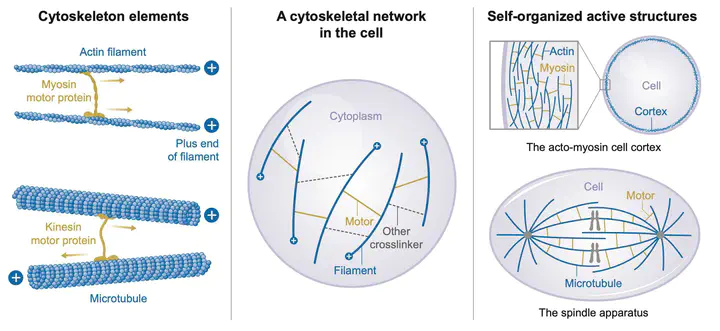
Abstract
Cytoskeletal networks are the main actuators of cellular mechanics, and a foundational example for active matter physics. In cytoskeletal networks, motion is generated on small scales by filaments that push and pull on each other via molecular-scale motors. These local actuations give rise to large-scale stresses and motion. To understand how microscopic processes can give rise to self-organized behavior on larger scales it is important to consider what mechanisms mediate long-ranged mechanical interactions in the systems. Two scenarios have been considered in the recent literature. The first scenario is systems that are relatively sparse, in which most of the large-scale momentum transfer is mediated by the solvent in which cytoskeletal filaments are suspended. The second scenario is systems in which filaments are coupled via cross-link molecules throughout. Here, we review the differences and commonalities between the physics of these two regimes. We also survey the literature for the numbers that allow us to place a material within either of these two classes.